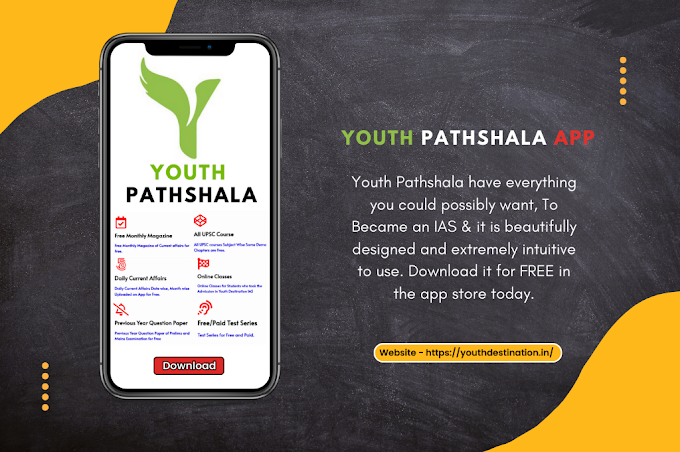In this article, we will explore effective
ways to develop a deep understanding of Indian art and culture, enabling you to
excel in your UPSC preparations. Indian art and culture hold immense
significance in the UPSC examination, as it is an essential part of the
country's rich heritage and history. Having a strong understanding of Indian
art and culture not only enhances your overall knowledge but also helps you
perform better in various sections of the UPSC examination.
1. Importance of Indian Art and Culture in UPSC Examination
Indian art and culture constitute a significant portion of the
UPSC syllabus. Topics related to Indian heritage, traditions, and cultural
practices are frequently asked in various stages of the examination, including
prelims, mains, and interviews. A thorough understanding of Indian art and
culture not only helps you score well in these sections but also provides a
broader perspective for comprehending social, political, and historical aspects
of the country.
2. Studying Indian History and Ancient Civilizations
To develop a strong understanding of Indian art and culture, it
is crucial to delve into the study of Indian history and ancient civilizations.
This includes exploring the Indus Valley Civilization, Vedic Period, Mauryan
Empire, Gupta Dynasty, and other significant historical eras. Familiarize
yourself with the contributions of prominent rulers, artists, and thinkers from
different time periods.
3. Exploring Traditional Indian Arts and Crafts
Traditional Indian arts and crafts offer valuable insights into
the cultural heritage of the country. Dive into the world of Indian miniature
paintings, Madhubani art, Tanjore paintings, Pattachitra, and various regional
art forms. Learn about the techniques, themes, and cultural symbolism
associated with these art forms.
4. Indian Classical Music and Dance Forms
Indian classical music and dance are integral parts of Indian
art and culture. Familiarize yourself with classical music genres such as
Hindustani and Carnatic music. Explore dance forms like Bharatanatyam, Kathak,
Odissi, Kathakali, and Manipuri. Gain an understanding of the historical
context, classical ragas, and intricate footwork associated with these art
forms.
5. Immersing in Indian Literature and Poetry
Indian literature and poetry showcase the diverse literary
traditions and linguistic richness of the country. Read renowned works from
ancient texts like the Vedas, Upanishads, and epics like the Ramayana and
Mahabharata. Dive into the works of celebrated Indian authors like Rabindranath
Tagore, R.K. Narayan, Premchand, and contemporary writers. Analyze their
themes, writing style, and their contribution to Indian literature.
6. Appreciating Indian Architecture and Sculpture
Indian architecture and sculpture reflect the artistic
brilliance and cultural heritage of the nation. Study the architectural marvels
of ancient Indian temples, forts, palaces, and monuments such as the Taj Mahal,
Khajuraho temples, and Ajanta-Ellora caves. Understand the architectural
styles, symbolism, and historical significance associated with these
structures. Similarly, explore the intricate sculptures and carvings found in
temples and archaeological sites across India.
7. Analyzing Folk Traditions and Festivals
Indian culture is deeply rooted in its vibrant folk traditions
and festivals. Immerse yourself in the colorful celebrations of festivals like
Diwali, Holi, Navratri, and Pongal. Gain knowledge about regional folk art
forms, folk dances, music, and storytelling traditions. Understand the cultural
significance and rituals associated with these festivities.
8. Learning about Indian Philosophy and Religions
Indian art and culture are closely intertwined with its
philosophy and religious beliefs. Study the teachings of ancient Indian
philosophers like Gautam Buddha, Mahavira, and Adi Shankara. Familiarize
yourself with the major religions in India, including Hinduism, Buddhism,
Jainism, Islam, Christianity, and Sikhism. Understand their core principles,
scriptures, rituals, and their influence on Indian art and culture.
9. Nurturing Knowledge through Museums and Exhibitions
Visit museums and art exhibitions dedicated to Indian art and
culture. Museums like the National Museum in Delhi, Victoria Memorial in
Kolkata, and Salar Jung Museum in Hyderabad house a vast collection of artifacts,
paintings, and sculptures. Observe and analyze the exhibits to gain a deeper
understanding of different art forms and historical periods.
10. Watching Indian Cinema and Theatre
Indian cinema, particularly Bollywood, has a significant impact
on popular culture and represents a unique aspect of Indian art. Watch
acclaimed Indian movies, both classic and contemporary, to explore the
portrayal of cultural themes, traditions, and social issues. Similarly, attend
live theatre performances, including traditional Indian plays and modern
theatrical productions, to experience the essence of Indian performing arts.
11. Examining the Influence of Indian Art and Culture on Modern
Society
Understand how Indian art and culture have influenced various
aspects of modern society, including fashion, design, music, and literature.
Explore the fusion of traditional and contemporary art forms in the works of
modern Indian artists. Analyze the impact of Indian culture on global platforms
and its representation in international events and exhibitions.
12. Online Resources for Indian Art and Culture
Take advantage of online resources dedicated to Indian art and
culture. Numerous websites, blogs, and educational platforms provide in-depth
information, articles, videos, and interactive materials to enhance your
understanding. Some notable online resources include the National Portal of
India, Archaeological Survey of India's website, and cultural websites of
individual states.
13. Interacting with Experts and Artists
Engage in discussions and seek guidance from experts in the
field of Indian art and culture. Attend seminars, workshops, and lectures
conducted by renowned scholars, historians, artists, and curators. Interact
with them to gain valuable insights, clarify doubts, and expand your knowledge.
14. Taking Guided Tours and Cultural Exchange Programs
Participate in guided tours and cultural exchange programs that
offer immersive experiences in different parts of India. These programs provide
opportunities to witness firsthand the diverse art forms, rituals, and cultural
practices of various regions. Engaging with local communities and artists will
deepen your understanding of Indian art and culture.
15. Self-Evaluation and Practice Questions for UPSC Preparation
Regularly assess your knowledge and understanding of Indian art
and culture by attempting practice questions and mock exams specifically
designed for the UPSC examination. Identify your strengths and weaknesses in
different areas and focus on improving them. Make use of study materials and
reference books tailored for UPSC preparation to enhance your knowledge base.
Conclusion
Developing a strong understanding of Indian art and culture is vital for excelling in the UPSC examination. By exploring various aspects such as history, traditional arts, music, literature, architecture, festivals, and philosophy, you will acquire a comprehensive knowledge of India's rich cultural heritage. Remember to utilize online resources, interact with experts, and immerse yourself in cultural experiences to deepen your understanding. By incorporating these strategies into your UPSC preparation, you will not only gain confidence in tackling art and culture-related questions but also develop a broader perspective that will benefit you throughout your career. Click for more about Online Classes for UPSC Preparation.
Best of luck on your UPSC journey!



















0 Comments